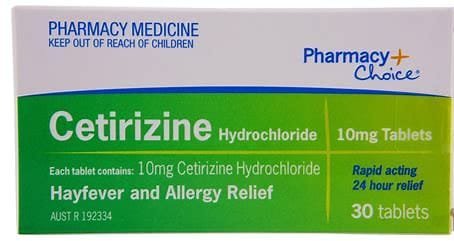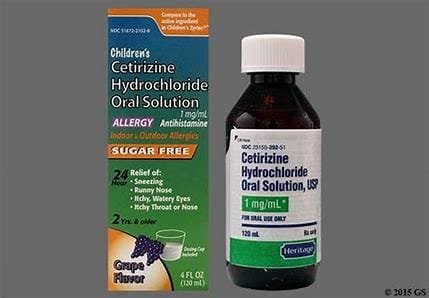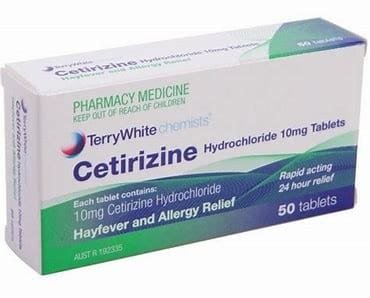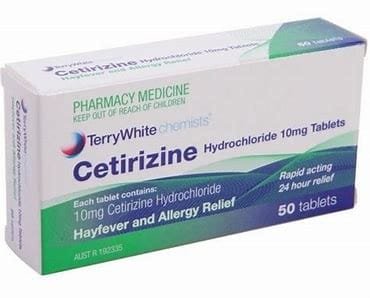Introduction
Cetirizine is the most prescribed second-generation antihistamine intended for use in the treatment of allergic symptoms that include sneezing, itching, runny nose, and watery eyes. It boasts a better control of allergic reactions, has far less sedation during long-term therapy, and is accessible under brand names such as Zyrtec, Aller-Tec, and Reactine.

Uses of Cetirizine
Allergic Rhinitis
For allergic rhinitis, also called hay fever, cetirizine is highly effective in helping patients manage with and recover from this disease. Such signs can be sneezing, dripping of the nose, and nasal congestion, commonly caused by outdoor allergens, such as pollen, and indoor allergens, such as dust mites.
Chronic Urticaria (Hives)
Cetirizine is most often prescribed for treating chronic urticaria or hives, a skin reaction that brings about red, itchy welts. Being an antihistamine, it would stop action with histamine, a body substance that causes such allergic reactions.
Other Allergic Reactions
Apart from asthma, it is helpful in treating various forms of allergic conditions, such as reactions to bites due to insects, contact dermatitis that is mediated by contact with allergens like poison ivy, and other skin irritations. It reduces swelling, redness, and itching.
Food allergies and drug allergies
Although cetirizine is not generally used for treating serious food or drug allergies, it may still be useful in cases where patients develop hives or swelling in relation to mild allergic symptom manifestation.
Seasonal and perennial allergies
Cetirizine can be applied in seasonal allergies, for instance, pollen allergy during spring and autumn, and for perennial allergies, where reactions towards animals’ dander or dust mites persist throughout the year.
Formulation and Dosage
There are several formulations of cetirizine and may be chosen according to the preferences as well as needs of the patient.
Tablets
The oral form of cetirizine is the most common tablet formulation, which is administered in both 5 mg and 10 mg strengths. Normally a strength of 10 mg is prescribed to adults and children above 12 years old. However, the age group of 6 to 12 years would need a strength of 5 mg.
Oral Syrup
For the younger clients, cetirizine is provided in an oral syrup presentation. Often, for those who cannot swallow their tablets, this is prescribed. It’s also available in fruit flavors to make it easier to administer to children.
Cetirizine Chewable Tablets
Cetirizine chewable tablets are another child-friendly formulation of the drug. These are flavored, and it is designed to be taken without requiring to swallow water, and it is quite convenient for children.
Disintegrating Tablets
These are designed to break down rapidly in the mouth, which, therefore, will enable quick absorption and will prove easy to manage by anyone that has problems taking pills.
Combination Formulations
Cetirizine is sometimes combined with other medicines, such as pseudoephedrine, a decongestant, for use in all-rounded management of all the allergy symptoms, including nasal congestion.
Benefits of Cetirizine Non-Sedating

Similar to first-generation antihistamines such as diphenhydramine, cetirizine actually generates minimal drowsiness in most patients. This makes it safe to take during the day when you need to be awake and attentive to work or school.
Long acting: A patient needs to administer only one dose of the medication per day to provide relief for up to 24 hours. Older antihistamines have to be administered several times during the day, so cetirizine is highly convenient as treatment.
Cetirizine’s onset of action is within one hour of taking the drug, which is good for helping acute symptoms at onset. This means resolution happens faster in allergy seasons or when exposure occurs.
Least drug interactions
The least drug interaction is associated with cetirizine, which makes it safe for patients with a vast array of other drugs. It is also well-tolerated by most people; in fact, chronic conditions like asthma and eczema do not necessarily present as a problem with cetirizine.
Safe for Long-Term Use
Because of the low propensity for side effects and mild sedative activity, cetirizine may be used safely over the long term. Unlike some of the older antihistamines, it is not likely to produce tolerance with continued use or other complications.
Disadvantages of Cetirizine Tendency to Cause Drowsiness
Although cetirizine is classified as a non-sedating antihistamine, drowsiness can still occur in a few individuals, especially when the drug is taken in higher doses or with alcoholic beverages and other antidepressive drugs.
Side Effects of Dry Mouth and Others
Minor but mild side effects reported are sedation, dry mouth, dizziness, headache, nausea, and diarrhea.
This is ineffective for severe allergies.
Cetirizine is not as effective with severe allergic reactions like anaphylaxis because that condition would have required immediate doctor visits and first aid treatment with epinephrine. Furthermore, it will help less with symptoms like nasal stuffiness when compared with combination products that contain decongestants.
Cost
Although cetirizine is an available generic drug, the branded versions, such as Zyrtec, are rather pricey, mainly if not covered by insurance. A generic version can help lower the cost, but it can be quite pricey in the long run.
Tolerance Over Time
In some cases, patients become tolerant to antihistamines over time. Then, an alternative or a dose adjustment may need to be made with another antihistamine.
Conclusion:

Cetirizine is a multiple therapy that acts very effectively in the treatment of various allergic symptoms and, at the same time, does not cause drowsiness. Its sustained duration of action and various formulations, along with its availability for use irrespective of age, render it a convenient selection for patients. However, as with every drug, some side effects are present, like mild drowsiness and tolerance development with continued use. Knowing the pros and cons may help the patients take informed decisions in allergy management.




